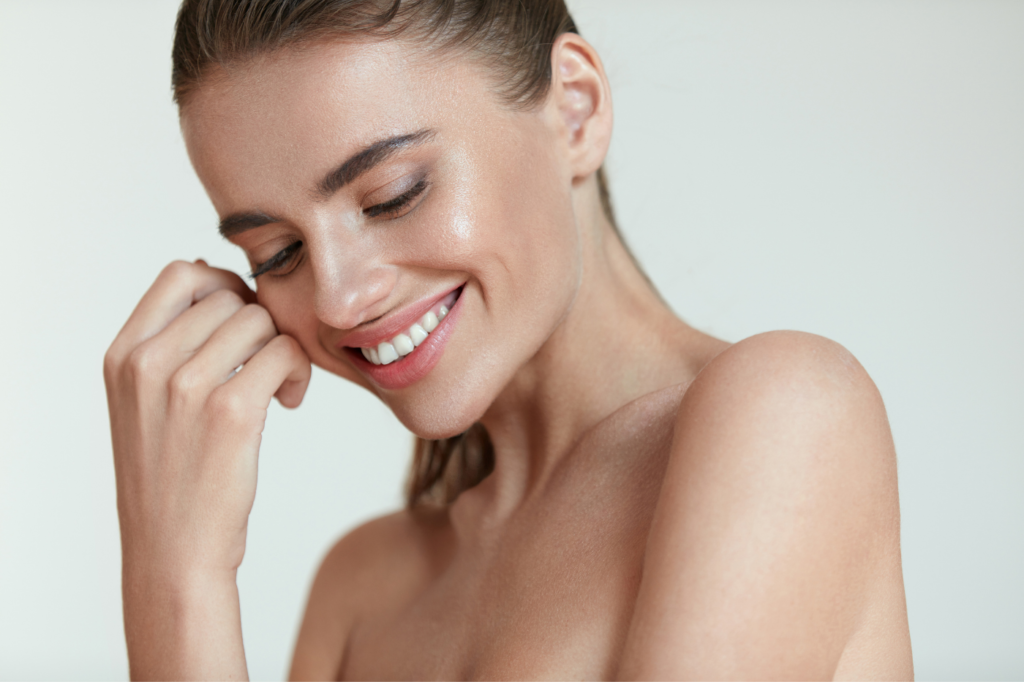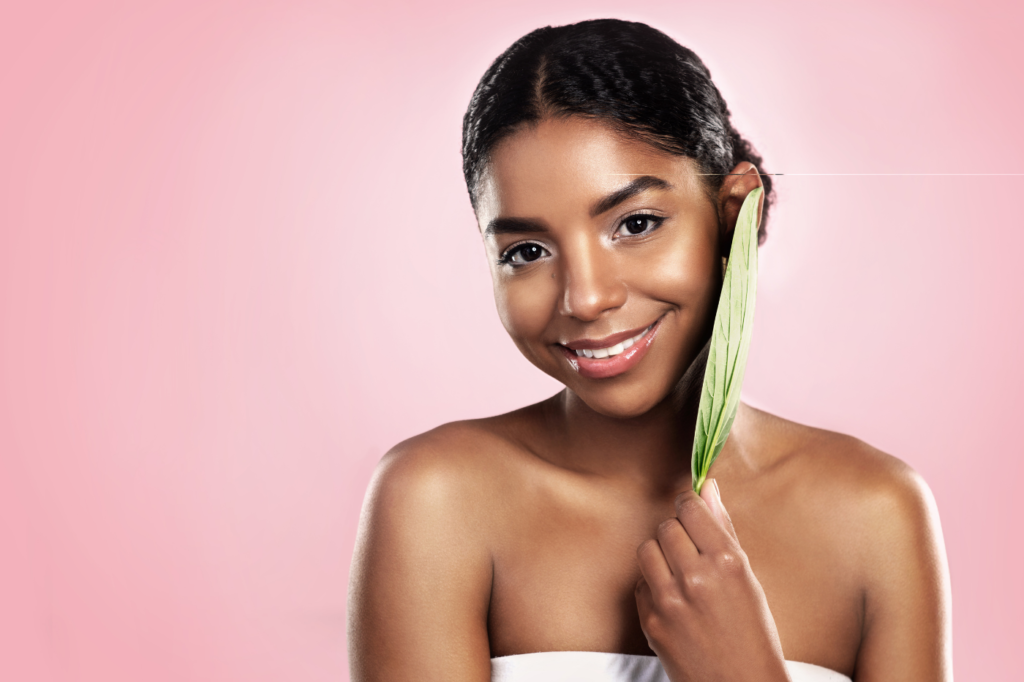Odds are that about half of the women you know have struggled with hormonal acne. Many of them have never even heard of spironolactone for hormonal acne. Lately, however, it has gained popularity as a treatment option for women who just can’t break out of their breakout cycle.
Spironolactone is a hormonal therapy that dermatologists have been prescribing for years to treat both female acne and excessive hair growth in women. It’s also used to treat hair loss due to its powerful effects on hormonal balance.
How Spironolactone Works For Acne
All of our bodies produce androgens, the hormones responsible for secondary male traits like facial hair and deeper voices. Unfortunately, these hormones can also cause our oil glands to overproduce, leading to clogged pores and consequent acne.
Hormonal fluctuations can explain why you break out before your monthly cycle, and an overproduction of androgens like testosterone can be associated with pimples and hair growth.
Thankfully, there’s hope for leveling out unbalanced hormones. Spironolactone is an androgen inhibitor that blocks the production and activity of these hormones. It blocks androgen receptors and can aid in the management of acne.
Teen girls are usually recommended to try other options first, and doctors are unlikely to recommend it to men at all. Because it blocks male hormones, spironolactone is only recommended for adult women with a hormone imbalance.
Symptoms of Hormonal Imbalance
How do I know if I have a hormone imbalance? Your doctor may be able to discern some of the symptoms of hormonal imbalance, or you may be able to identify signs of a hormonal imbalance in your everyday health. These symptoms may include bloating, fatigue, moodiness, blood sugar fluctuations, and more.
If you’re concerned you have a hormone imbalance, here are some common symptoms to look for:
- Acne concentrated on the chin or jawline
- Acne on the chest or upper back (in more severe cases)
- Unwanted hair growth or hair loss
- Irregular periods
- Night sweats
- Headaches
Remember that our hormones will naturally fluctuate sometimes, and hormonal imbalance is par for the course during:
- Puberty
- Pregnancy
- Breastfeeding
- Menopause
Acne during these phases is reasonably normal, even for healthy women, and might not need a long-term treatment like spironolactone. You can always discuss options with your dermatologist for ways to naturally manage these symptoms.
Other Names and Uses for Spironolactone
Also known as Aldactone or simply “water pills,” the catch-all term for diuretics, spironolactone is primarily used for other health complications.
Beyond hormonal acne treatment for women, other uses for spironolactone include:
- Fluid retention
- High blood pressure
- Heart failure
- Complications from kidney and/or liver disease
Spironolactone has been approved as a blood pressure medication, and most dermatologists will measure your blood pressure even if you’re taking it for acne instead of cardiovascular concerns.
Because the Food and Drug Administration (FDA) has not specifically approved it as an acne treatment, spironolactone for acne is considered “off-label” drug use. However, many women have taken it to prevent male hair patterns, including both hair loss and hirsutism as well as for acne.
Can you lose weight on spironolactone? While it’s possible to lose weight on spironolactone, this is not its primary purpose. Though it is a diuretic, weight loss probably should not be a deciding factor when discussing spironolactone as an acne treatment option.
Dosage and Treatment Time
While topical gels are available, oral spironolactone is more common. Most doctors begin treatment at a low dose of around 25mg and work up a 50 to 100mg range, depending on your skin, age, and other factors.
If your acne tends to line up with your menstrual cycle, your dermatologist might recommend only taking it the week before your period. Results are better if you take it at the same time every day.
It’s important to discuss with your dermatologist when using multiple acne medications. Many of these prescriptions can interact poorly with one another. Be sure to consult your doctor to form the best treatment plan for you.
How long does spironolactone take to work? Many women see a decrease in oiliness in a matter of weeks as spironolactone begins to work. Some women will see their acne become worse before it gets better, but give it time. Typically, within 2-3 months of beginning spironolactone for acne, breakouts are noticeably less severe.
What happens when you stop taking spironolactone for acne? If you stop any hormonal treatment altogether, your body will generally revert to its natural habits. If you stop taking spironolactone suddenly, breakouts may reappear. Instead, work with your dermatologist to slowly lower your dosage over time to avoid rebound breakouts.
Some women only need spironolactone for a while and are able to taper off, while other patients will require more long-term use.
Complications and Side Effects of Spironolactone for Acne
Most people do not experience noticeable side effects while on spironolactone, but some may experience:
- Changes in menstrual cycle (we’ll circle back to this)
- Frequent urination
- Fatigue
- Headaches
- Dizziness
Can you drink alcohol while taking spironolactone? It is best to limit alcohol intake while taking spironolactone, as alcohol can increase the side effects, including dizziness.
Spironolactone is a potassium-sparing diuretic. That means even though it flushes out extra water, it won’t lower potassium levels.
If you’re not avoiding potassium-rich foods (think bananas, avocados, spinach, or sports or electrolyte replacement drinks), you could enter hyperkalemia, a state of too much potassium.
Hyperkalemia, or too much potassium, can lead to:
- Abdominal pain
- Nausea
- Vomiting
- Diarrhea
- Heart palpitations
- Weakened arms and legs
Other Potential Hormonal Problems
What are the side effects of spironolactone? The most common side effects of spironolactone include:
- Cramps
- Breast tenderness
- Breast enlargement
- Irregular periods
All of these can be triggered by the effects of spironolactone on your hormones. While many women like spironolactone because it may treat acne without birth control, oral contraceptives may help decrease its side effects.
Due to these hormonal side effects, do not take spironolactone if you become pregnant or are sexually active without birth control methods.
Is spironolactone a steroid? Spironolactone is made of four steroid rings and is in a class of medications called aldosterone receptor antagonists which are diuretics and their primary use is to remove excess water from the body. The discovery that spironolactone also had anti-androgenic effects was when it was observed to help with overgrowth of hair in patients who were using it for their high blood pressure and also had concurrent polycystic ovarian syndromes.
Natural Remedies for Hormonal Imbalance
Suppose you want to try a more natural approach to managing hormonal acne before jumping to medication. In that case, changes to your diet or supplementation can help lessen the appearance of acne vulgaris without blocking your hormone production.
Here are some natural remedies to manage hormonal acne:
- Omega-3s are rich in anti-inflammatory properties can help regulate hormones
- DIM supplements can help balance hormones
- Green tea extract is a natural anti-inflammatory
- Vitamin D (if you’re deficient), as this vitamin plays a role in moderating insulin, a hormone, and is anti-inflammatory
A healthy diet plays a significant role in healthy skin, so try to avoid fried or oily foods, excessive dairy, sugar, and alcohol. Some women also find intermittent fasting helpful in managing their hormonal acne.
If you’re looking for an addition to your skincare routine, there are several over the counter topical treatments to try, like:
- Tea tree oil (diluted)
- Salicylic acid
- Glycolic acid
- Benzoyl peroxide (BPO)
- Bentonite clay masks with apple cider vinegar
Your doctor may also recommend retinoids or oral antibiotics. Hormonal acne is a complex issue that has many causes and potential treatments. It’s important to do your research and discuss your options with your dermatologist.
Is Spironolactone Right for Your Acne?
If you’re struggling with hormonal acne that isn’t responding to lifestyle and diet changes, spironolactone may be an excellent option. Many women have had great results and seen their hormones level out. While it’s not the first treatment to reach for, spironolactone can be effective.
Should I take spironolactone for acne? You should only take spironolactone if you’ve discussed it with your dermatologist. Spironolactone should not be the first measure taken to treat acne and should only be used if you have established the root cause of your breakouts is hormonal.
If you have stubborn hormonal acne, talk to your dermatologist about if spironolactone is right for you.
Sources
- Ebede, T. L., Arch, E. L., & Berson, D. (2009). Hormonal treatment of acne in women. The Journal of clinical and aesthetic dermatology, 2(12), 16. Full text: https://www.ncbi.nlm.nih.gov/pmc/articles/PMC2923944/
- Kim, G. K., & Del Rosso, J. Q. (2012). Oral spironolactone in post-teenage female patients with acne vulgaris: practical considerations for the clinician based on current data and clinical experience. The Journal of clinical and aesthetic dermatology, 5(3), 37. Abstract: https://pubmed.ncbi.nlm.nih.gov/22468178/
- Dinh, Q. Q., & Sinclair, R. (2007). Female pattern hair loss: current treatment concepts. Clinical interventions in aging, 2(2), 189.. Full text: https://www.ncbi.nlm.nih.gov/pmc/articles/PMC2684510/
- Charny, J. W., Choi, J. K., & James, W. D. (2017). Spironolactone for the treatment of acne in women, a retrospective study of 110 patients. International journal of women’s dermatology, 3(2), 111-115. Abstract: https://www.sciencedirect.com/science/article/pii/S2352647516300363
- Afzali, B. M., Yaghoobi, E., Yaghoobi, R., Bagherani, N., & Dabbagh, M. A. (2012). Comparison of the efficacy of 5% topical spironolactone gel and placebo in the treatment of mild and moderate acne vulgaris: a randomized controlled trial. Journal of dermatological treatment, 23(1), 21-25. Abstract: https://pubmed.ncbi.nlm.nih.gov/20964565/
- OBER, K. P., & HENNESSY, J. F. (1978). Spironolactone therapy for hirsutism in a hyperandrogenic woman. Annals of internal medicine, 89(5_Part_1), 643-644. Abstract: https://www.acpjournals.org/doi/10.7326/0003-4819-89-5-643
- Jung, J. Y., Kwon, H. H., Hong, J. S., Yoon, J. Y., Park, M. S., Jang, M. Y., & Suh, D. H. (2014). Effect of dietary supplementation with omega-3 fatty acid and gamma-linolenic acid on acne vulgaris: a randomised, double-blind, controlled trial. Acta dermato-venereologica, 94(5), 521-526. Abstract: https://pubmed.ncbi.nlm.nih.gov/24553997/
Ahmed Mohamed, A., Salah Ahmed, E. M., Abdel-Aziz, R. T., Eldeeb Abdallah, H. H., El-Hanafi, H., Hussein, G., … & El Borolossy, R. (2020). The impact of active vitamin D administration on the clinical outcomes of acne vulgaris. Journal of Dermatological Treatment, 1-6. Abstract: https://pubmed.ncbi.nlm.nih.gov/31868550/




